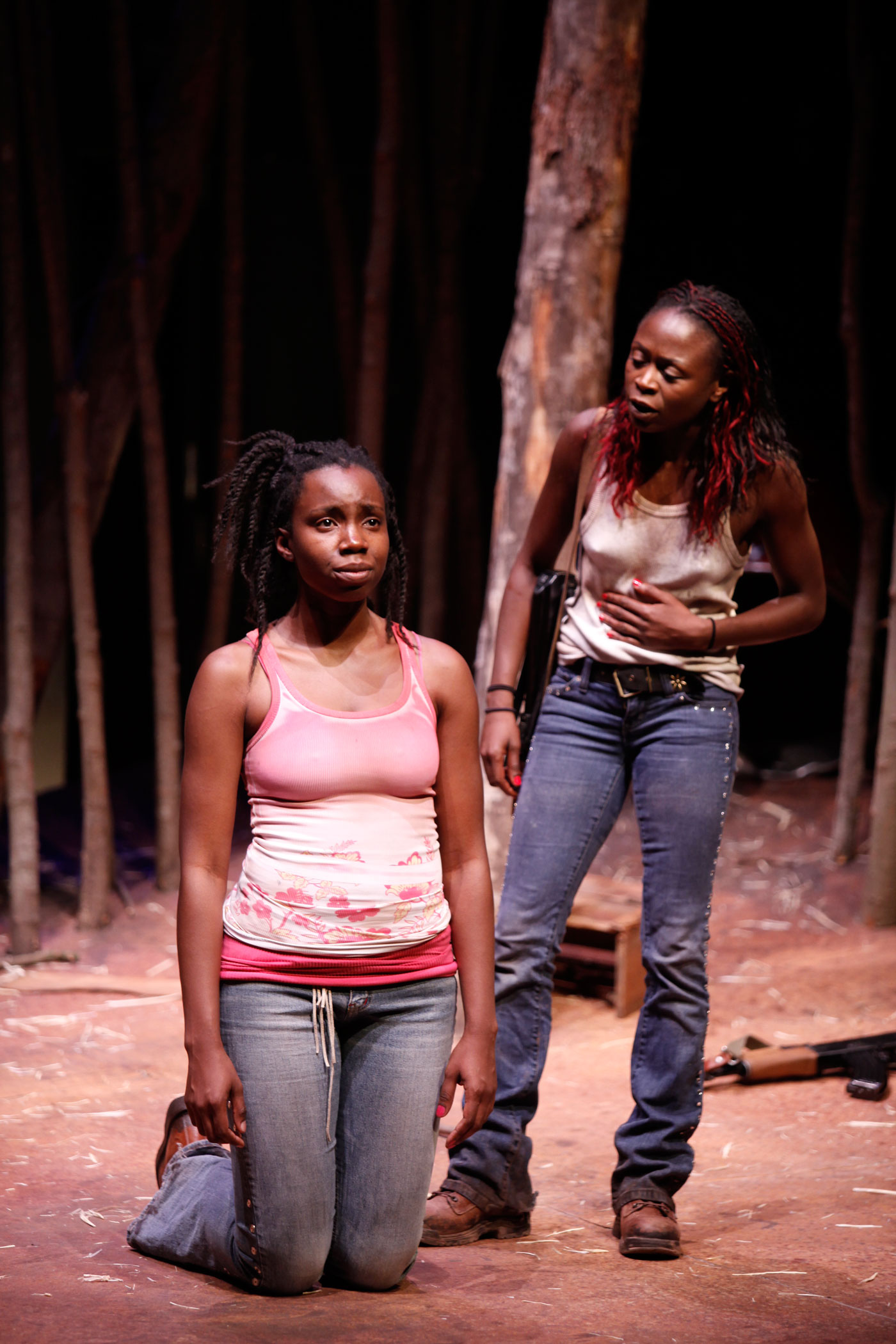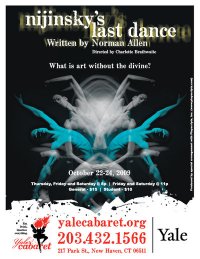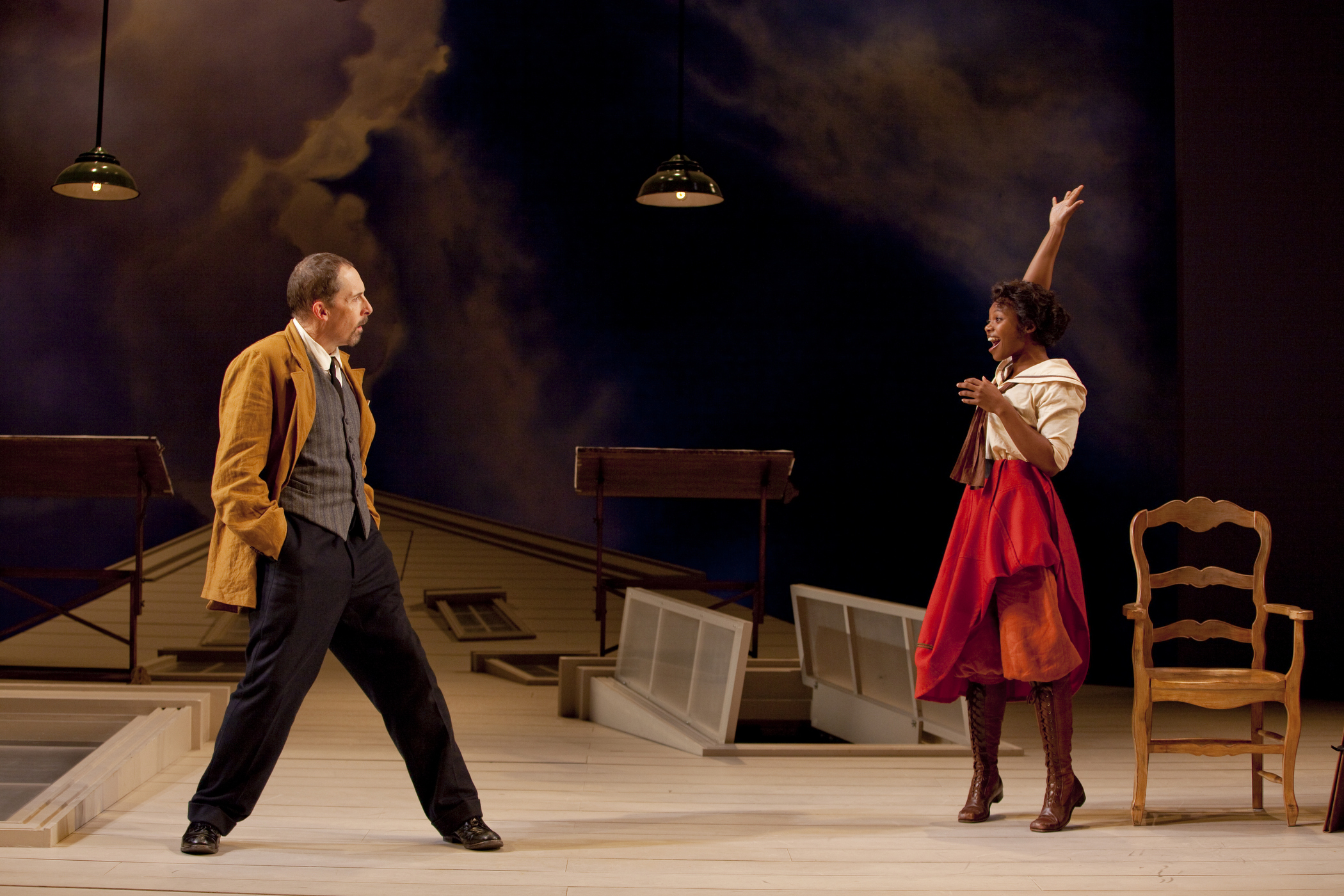 OBIE Award winner Danai Gurira’s Eclipsed, playing through Nov. 14 at the Yale Rep, is set in the camp of a rebel Liberian warlord in 2003. There we meet three women: two are his ‘wives,’ which means: forced into service, sexual and otherwise, for the man they call the C.O. The third woman, younger, has just arrived, and soon becomes #4 (the women refer to each other by number). The absent wife, #2, we learn, has joined the rebel forces as a soldier.
OBIE Award winner Danai Gurira’s Eclipsed, playing through Nov. 14 at the Yale Rep, is set in the camp of a rebel Liberian warlord in 2003. There we meet three women: two are his ‘wives,’ which means: forced into service, sexual and otherwise, for the man they call the C.O. The third woman, younger, has just arrived, and soon becomes #4 (the women refer to each other by number). The absent wife, #2, we learn, has joined the rebel forces as a soldier.
The play’s plot mainly concerns what will become of #4, the youngest woman and the only one of the four able to read and write.
If this sounds grim, no doubt it is. But the play, perhaps surprisingly, isn’t. The four women are extremely lively company; their personalities make for considerable entertainment, and their situation creates a level of tension that never completely subsides. Driven by dialogue more than action, Eclipsed demonstrates that interpersonal dynamics are the key to all drama, no matter where we find them.
Before the end of the first act Rita, an educated woman who is one of the “Peace Ladies” endeavoring to persuade warlords to lay down their arms and make peace, arrives, completing the cast. Rita is also in search of a lost daughter, who may or may not be #4.
While the play can’t escape a certain didacticism, if only because the vast majority of its audience will need to be educated about the plight of Liberia, it is much to Gurira’s credit that the harshness of the situation is set very much in context. First of all, in the tribal areas these women hail from, polygyny is not uncommon, even in the 21st century; thus the women, in their acquiescence to the situation, are not writing off their selfhood. What they have dispensed with is having to fend for themselves in a war-torn land, ruled by men with guns, but also, as they are swift to tell #4, they are preserved from camps where women are shared among all the soldiers. Being at the beck and call of one man is deemed both preferable and more traditional.
Indeed, Gurira establishes these women as types we might identify from tales of slavery in our own country, a fact that makes the play resonate beyond our sympathy for “those poor people over there.” #1, Helena (Stacey Sargeant) is much like the complicit “mammy” in many versions of plantation life in the south: she doesn’t really question the C. O.’s right to lord it over them and make what demands he will. But this doesn’t make her servile so much as dependable and loyal. She believes in a pact between herself and the C.O.
#3, Bessie (Pascale Armand) is more or less the comic relief; pregnant and somewhat vain and silly, she is also quick-witted. Not only does she accept the harem-like conditions, she is determined to do everything to promote her standing in the pecking order. #4, known only as “The Girl” (Adepero Oduye), is the impressionable new-comer, but also, in a sense, the prize. Will she accept her lot and bond with the mammy-like Helena, or will she seek a greater freedom and autonomy, like #2?
Gurira has said that it was a photograph of rebel women soldiers such as #2, Maima (Zainab Jah), “feminine, glamorous, intimidating, powerful, belligerent, and African,” that inspired her to learn about the conditions of their lives and write the play. And indeed Maima, who takes the warrior name “Disgruntled,” becomes central to Act II as she tries to indoctrinate The Girl into the way of the warrior. Tough, savvy, with no illusions, she is the voice of reality in wartime: to carry a gun means strength and autonomy, but, as becomes clear, it also means choosing to oppress rather than be oppressed.
And that is the moral dilemma of armed-insurrection that the play ultimately turns on, with The Girl as the test case.
Focused through the interactions of a group of women who must make do with a situation not of their making, the question of how to cope becomes a personal decision met by each woman individually. And, though the women can be viewed as types, it is our strong belief in their reality, and in the personal significance of their actions, that drives the play. One can’t help liking each of them, but for different reasons.
The cast is uniformly excellent. Eclipsed is a true ensemble piece where no one is ever front and center with the others only offering support. Speaking a dialect that will be foreign to most listeners, the cast deliver their lines with an emphatic poetry that charms the ears and is always intelligible. They are so convincing in their roles, one would be stymied to hear the actresses suddenly speak in their normal accents. The set is naturalistic, spare yet lovely. The lighting effects -- including rain, early morning sun, dappled forest -- very effective.
Perhaps the strongest impression the play leaves us with is not of the struggle for self-determination, but of the basically supportive and companionable aspects of human life, even in the most unpromising circumstances. And on that front, it is perhaps #1, Helena, who emerges as the play’s key figure, for it is she who has the furthest to go to grasp the new world that comes with the end of the war.
ECLIPSED, directed by Liesl Tommy, features sets by Germán Cárdenas Alaminos, costumes by Elizabeth Barrett Groth, lighting by Marcus Doshi, sound by The Broken Chord Collective, dramaturgy by Walter Byongsok Chon, vocal and dialect coaching by Beth McGuire, and stage management by Karen Hashley
.

 Henrik Ibsen’s dramas are classics of the theater, and his best-known plays lay bare the stultifying social mores of the late 19th century: A Doll’s House, Ghosts, Hedda Gabler. The later Ibsen, while still based in the naturalism of his main period, moves toward drama that is more symbolic, perhaps even allegorical -- dramas where the astute student of theater might see possibilities opening up for a new age of stagecraft.
Henrik Ibsen’s dramas are classics of the theater, and his best-known plays lay bare the stultifying social mores of the late 19th century: A Doll’s House, Ghosts, Hedda Gabler. The later Ibsen, while still based in the naturalism of his main period, moves toward drama that is more symbolic, perhaps even allegorical -- dramas where the astute student of theater might see possibilities opening up for a new age of stagecraft.